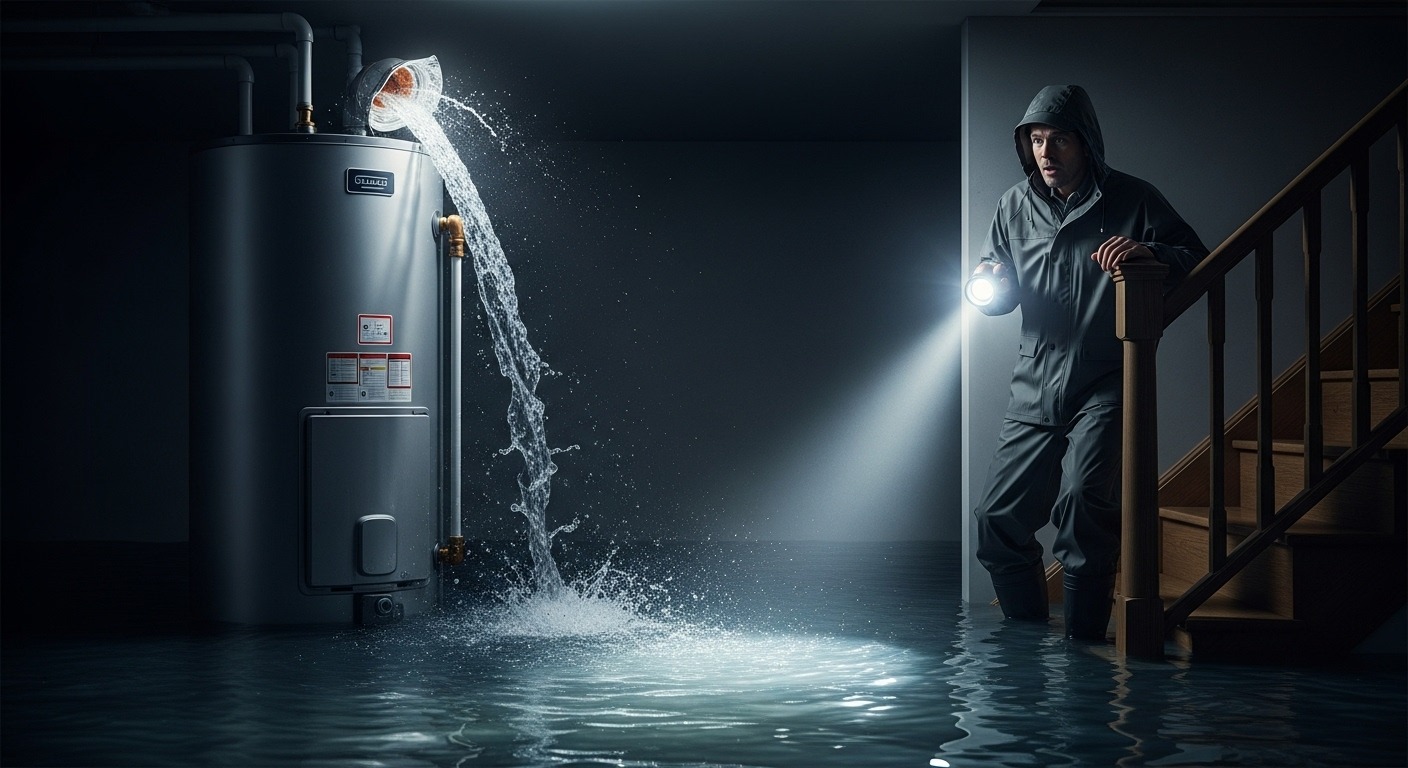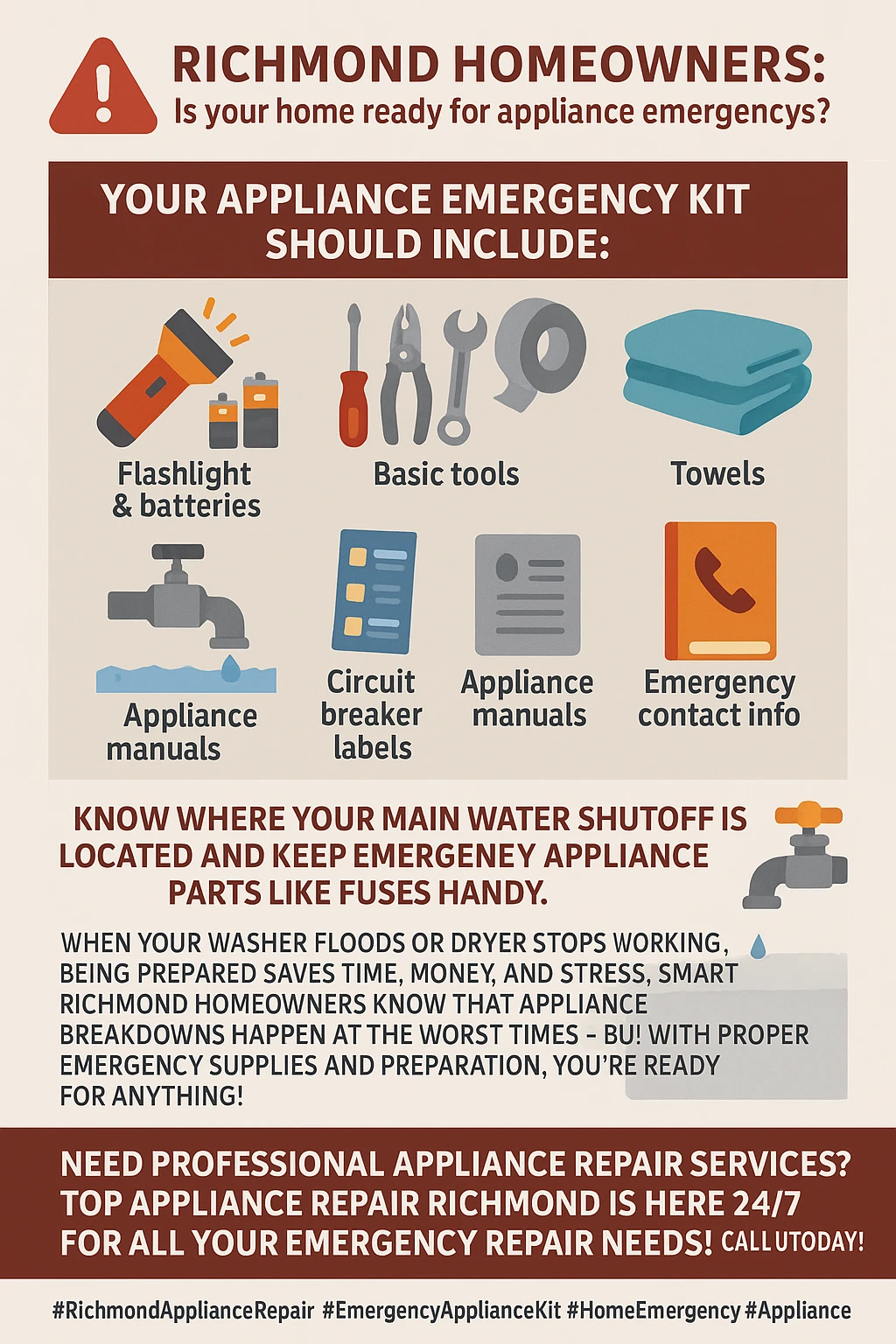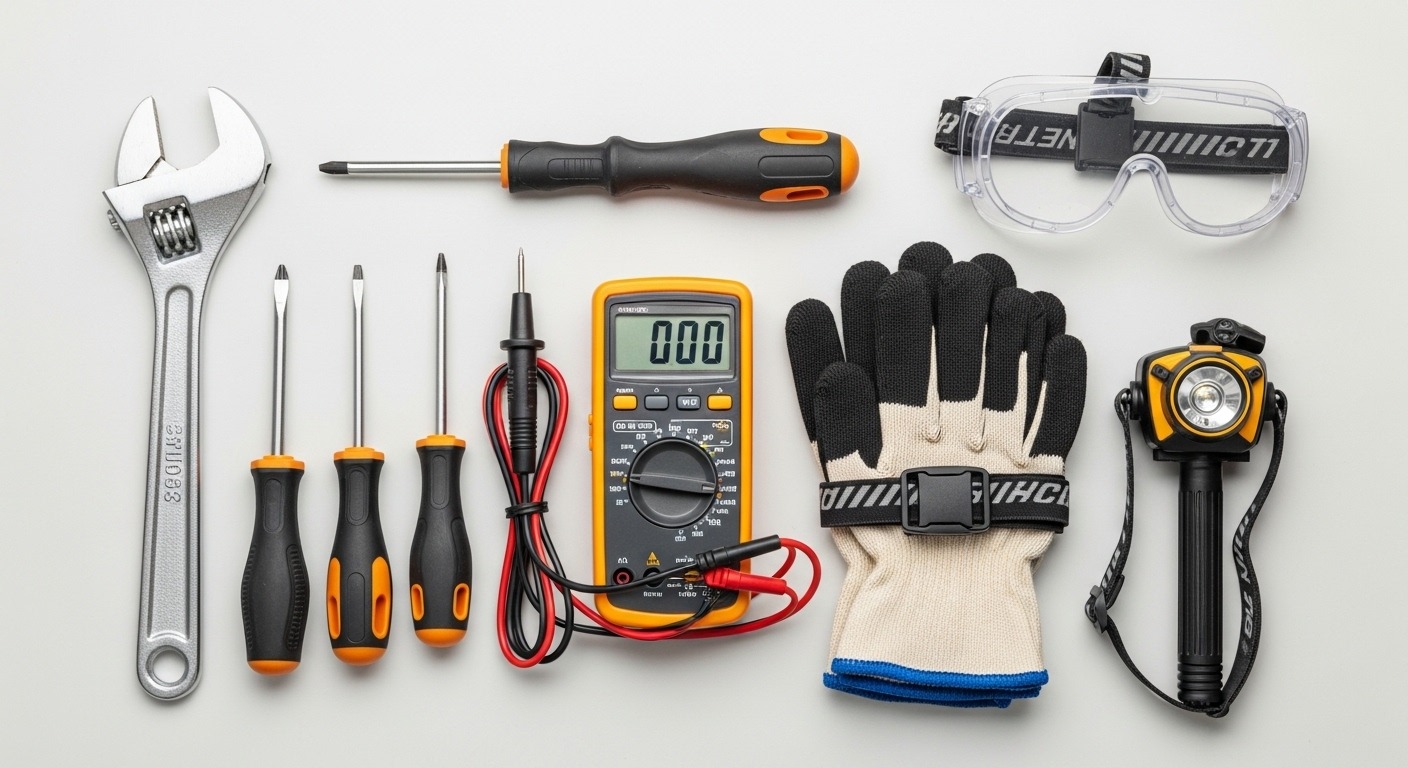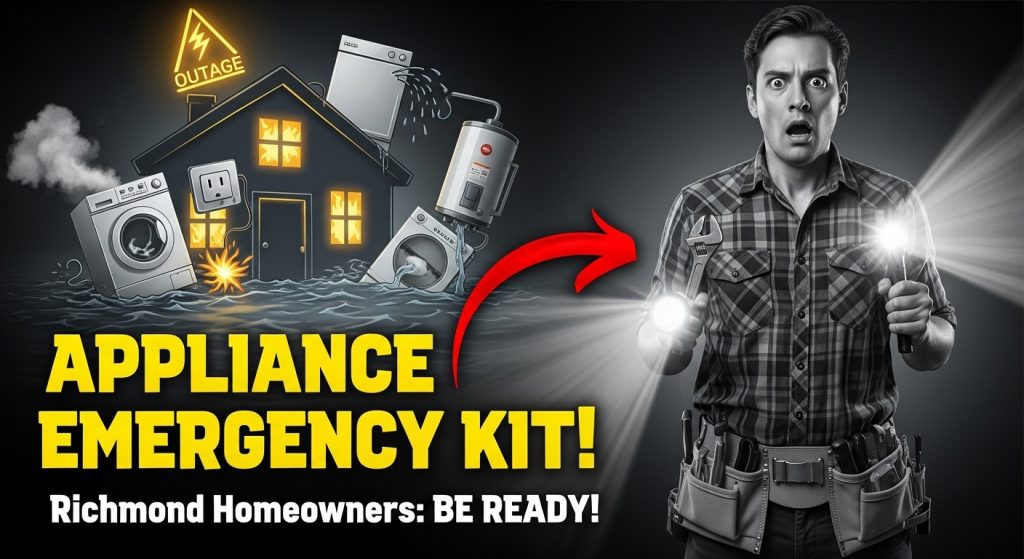Appliance Emergency Kit: What Every Richmond Homeowner Should Have Ready Before Disaster Strikes
Ever wondered what you’d do if your refrigerator died during a week-long power outage or your water heater burst during a winter storm? Here’s everything Richmond homeowners need to know about building the ultimate appliance emergency kit that could save your home, your food, and your sanity when disaster strikes.
Picture this: it’s 2 AM during a Richmond thunderstorm, and you hear that dreaded sound – water gushing where it shouldn’t be. Your water heater just gave up the ghost, and you’re standing in your basement watching thousands of dollars in damage accumulate by the minute. This scenario plays out more often than you’d think, and it’s exactly why every Richmond homeowner needs more than just the basic emergency kit sitting in their closet.  Most emergency preparedness guides focus on the obvious stuff – water, flashlights, and canned goods. But what happens when your actual lifeline appliances fail during an emergency? When the power’s been out for three days and your refrigerator becomes a science experiment, or when a gas leak from your stove turns a minor storm into a major evacuation situation? That’s where appliance emergency preparedness comes into play, and trust me, it’s a game-changer that most homeowners never consider until it’s too late.
Most emergency preparedness guides focus on the obvious stuff – water, flashlights, and canned goods. But what happens when your actual lifeline appliances fail during an emergency? When the power’s been out for three days and your refrigerator becomes a science experiment, or when a gas leak from your stove turns a minor storm into a major evacuation situation? That’s where appliance emergency preparedness comes into play, and trust me, it’s a game-changer that most homeowners never consider until it’s too late.
The reality is that our modern homes are essentially appliance ecosystems, and when one critical piece fails during a disaster, it can trigger a domino effect that turns a manageable situation into a full-blown crisis. Richmond’s unique climate challenges – from humid summers that overwork cooling systems to sudden storms that cause power surges – make appliance-specific emergency planning absolutely essential for protecting both your family and your property.
Key Outtakes:
- Every Richmond home needs an appliance-specific emergency kit containing essential tools, parts, and safety equipment for immediate response to appliance failures beyond basic disaster supplies
- Quick utility shutdown procedures can prevent catastrophic damage when appliances malfunction during disasters, but require specific tools and knowledge most homeowners lack
- Professional emergency repair contacts and proper documentation streamline recovery efforts and insurance claims when critical appliances fail during emergencies
- Richmond’s climate patterns create seasonal appliance stress that requires adjusted emergency preparedness strategies throughout the year
- Appliance interdependencies mean that when one critical unit fails, it can impact your entire household’s emergency response capability and daily survival needs

Understanding Appliance Emergency Preparedness Fundamentals
When we talk about emergency preparedness, most Richmond homeowners immediately think about the traditional disaster kit recommendations. You know the drill – one gallon of water per person per day, non-perishable food, battery-powered radio, flashlight, first aid kit, and extra batteries. While these basics are absolutely essential, they represent just the tip of the emergency preparedness iceberg when it comes to protecting your home and family from appliance-related disasters.
The harsh truth is that our homes have become incredibly dependent on complex appliance systems that can fail spectacularly during emergencies. Your refrigerator isn’t just keeping food cold – it’s preventing food poisoning and maintaining your family’s nutrition during crisis situations. Your water heater isn’t just providing hot water – it’s essential for sanitation and health maintenance when other systems are compromised. Your HVAC system isn’t just controlling temperature – it’s managing indoor air quality and preventing humidity-related problems that can cause long-term structural damage.
What makes appliance emergencies particularly challenging is their unpredictable nature and cascading effects. A power surge during a storm might knock out your refrigerator, forcing you to consume or discard hundreds of dollars worth of food while also eliminating your primary food safety system. A gas leak from your stove doesn’t just affect cooking – it can force evacuation and require professional intervention before your home becomes safe again. Understanding these interconnected vulnerabilities is the first step in building comprehensive appliance emergency preparedness.
Essential Tools and Safety Equipment for Appliance Emergencies
Building an appliance emergency toolkit starts with understanding that different emergency scenarios require different response capabilities, and having the right tools can mean the difference between a minor inconvenience and a major disaster. The foundation of any appliance emergency kit should include multi-purpose tools that can handle various utility shutoff procedures and basic diagnostic tasks. 
Your toolkit should start with an adjustable wrench specifically sized for gas shutoff procedures, as gas shutoffs at the meter require specific tools and should only be performed when instructed by utility companies or emergency responders. Beyond basic wrenches, you’ll need multiple screwdriver types including flathead, Phillips, and Torx varieties to handle different appliance manufacturer specifications. A quality multimeter is essential for electrical troubleshooting and safety verification, allowing you to confirm whether electrical components are receiving power and functioning properly.
Safety equipment forms the second critical component of your appliance emergency toolkit. Non-contact voltage testers can prevent dangerous electrical accidents when working around failed appliances, while safety goggles and work gloves protect against debris, chemicals, and sharp edges commonly encountered during appliance emergencies. Don’t overlook respiratory protection – dust masks can filter contaminated air during appliance failures that release particles or chemical vapors into your home environment.
Portable power and lighting solutions round out your essential tool collection. Battery-powered or hand-crank radios maintain emergency communications when your home’s electrical system is compromised. Flashlights with extra batteries are crucial for working in dark utility areas where appliance controls and shutoffs are typically located. Solar-powered chargers help maintain communication devices during extended outages, ensuring you can coordinate with emergency services and utility companies throughout the crisis.
The key to effective appliance emergency tool selection is focusing on versatility and immediate need scenarios. Every tool should serve multiple purposes and address the most common emergency situations Richmond homeowners face. Seasonal tools like portable generators or emergency heating devices can be valuable additions, but your core toolkit should prioritize items that provide immediate safety response and damage prevention capabilities.
Critical Utility Shutdown Procedures Every Richmond Homeowner Must Know
Understanding how to quickly and safely shut off utilities during appliance emergencies can prevent minor malfunctions from becoming catastrophic disasters, but these procedures require specific knowledge and tools that most homeowners don’t currently possess. The ability to isolate failed appliances from your home’s utility systems can save thousands of dollars in damage and potentially prevent life-threatening situations. 
Gas appliance emergency procedures demand the highest level of caution and preparation. Individual appliance gas valves can be shut off by turning the valve perpendicular to the gas line, effectively isolating a single appliance without affecting your home’s entire gas supply. However, main gas shutoffs require more serious consideration. Gas shutoffs at the meter should only be attempted when instructed by utility company representatives or fire department personnel, and restoration must always be performed by qualified professionals. Gas emergencies require immediate evacuation and professional assistance – never attempt to restore gas service yourself.
Electrical system emergency shutoffs follow a specific sequence that protects both you and your home’s electrical infrastructure. The proper procedure involves turning off individual circuits before shutting off the main breaker, which prevents dangerous electrical feedback and potential component damage. Special precautions are essential when dealing with basement flooding scenarios, as water contact with electrical panels poses serious electrocution risks. Always use voltage testers to confirm power is completely off before touching any electrical components, and remember that standing water and electricity create lethal combinations.
Water system emergency controls typically offer the most straightforward shutdown procedures, but knowing valve locations and operation methods is essential for quick response. Main water shutoff valves are commonly located near the front of the house, by the water heater, or buried outside near the street connection. Individual appliance water shutoffs allow you to isolate specific units without affecting your entire home’s water supply, which can be crucial for maintaining emergency water access while addressing localized flooding or leak situations.
Emergency shutdown procedures become significantly more complex when multiple systems are involved or when access is compromised by flooding, debris, or structural damage. Developing specific shutdown sequences for different emergency scenarios and practicing these procedures during non-emergency situations ensures you can respond quickly and safely when seconds count. Document valve locations, required tools, and step-by-step procedures for each utility system in your home.
Professional Emergency Services and Documentation Strategy
Knowing when to attempt DIY solutions versus calling professional emergency services can prevent dangerous situations and minimize long-term damage, but this decision-making process requires understanding the scope and severity of different appliance emergency scenarios. Professional emergency repair services provide critical capabilities that go beyond basic homeowner response, particularly for situations involving safety hazards or complex system failures.
True appliance emergencies requiring immediate professional attention include gas leaks that pose fire or explosion risks, electrical
